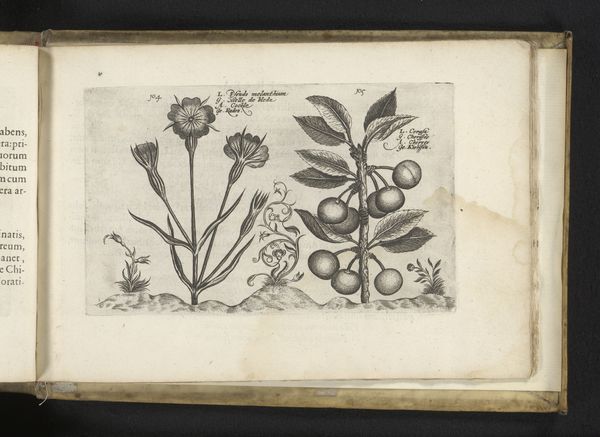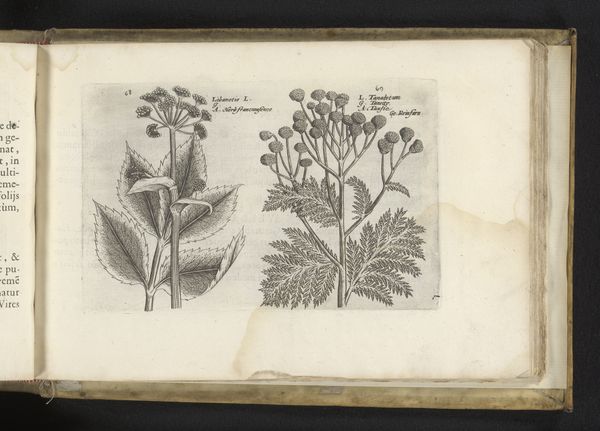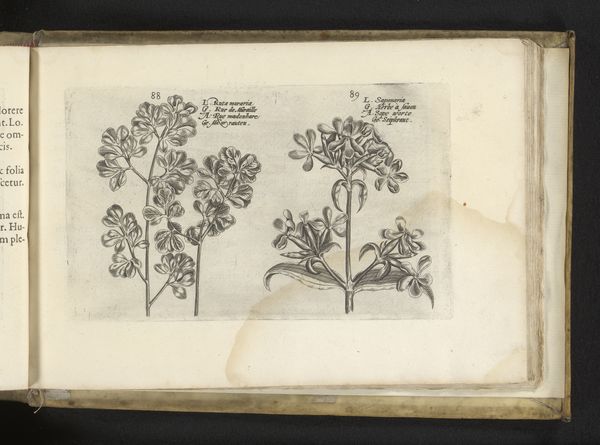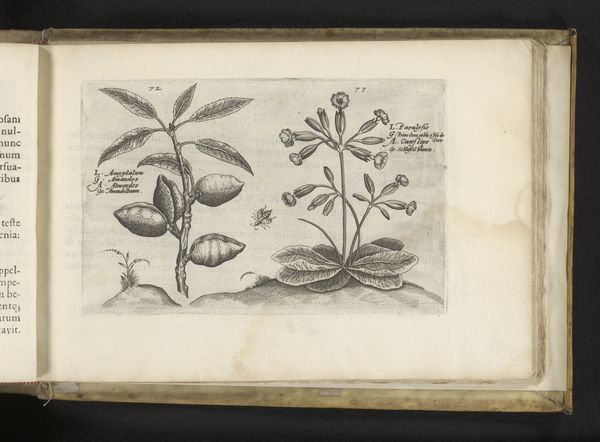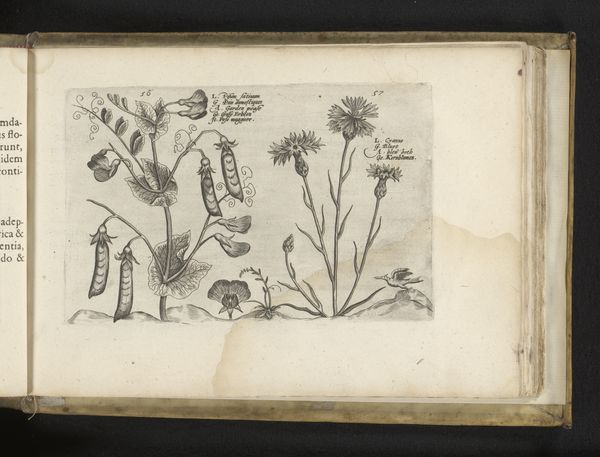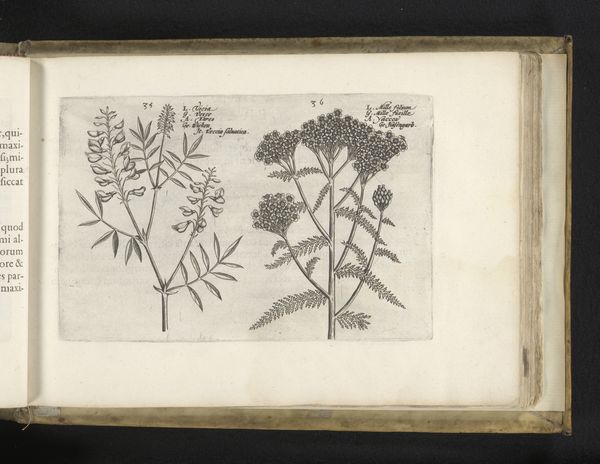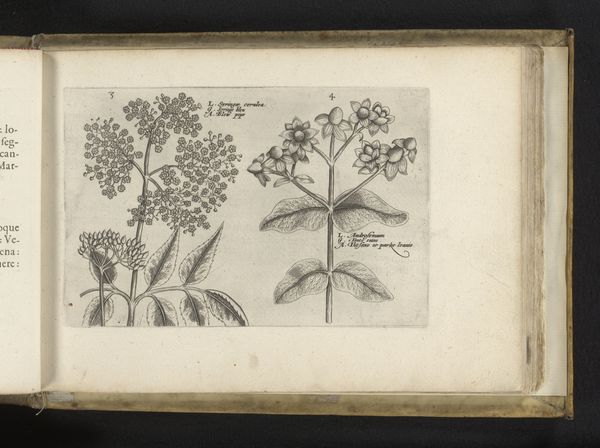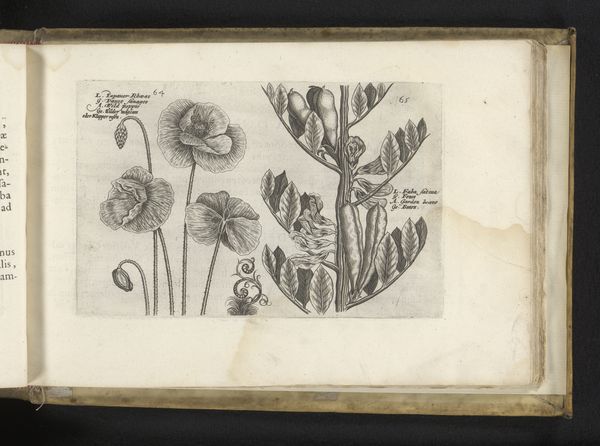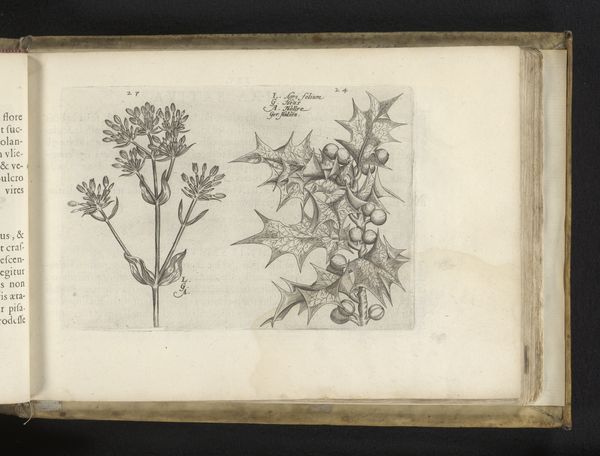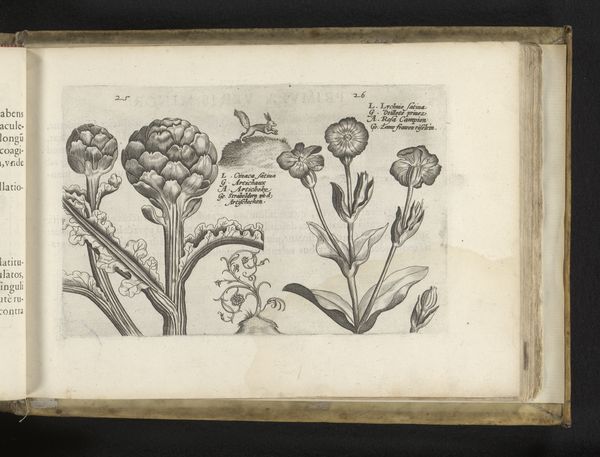
drawing, print, paper, ink, engraving
#
drawing
# print
#
flower
#
figuration
#
paper
#
11_renaissance
#
ink
#
northern-renaissance
#
engraving
Dimensions: height 127 mm, width 197 mm
Copyright: Rijks Museum: Open Domain
Curator: Crispijn van de Passe the Younger created this engraving, "Madeliefje en zomereik," or "Daisy and Oak," around 1617. It now resides in the Rijksmuseum. My first thought is how precise and delicate the lines are; it almost feels like looking through a very focused microscope. Editor: Indeed. It's remarkable how the artist captures such minute details using only ink on paper. These plants transcend mere botanical illustration. I wonder about the cultural implications. Was this accessible to a broad audience, or was it intended for an elite, educated class during the Renaissance? Curator: It's more than likely it was commissioned for inclusion in a botanical text or herbal. The minute observation speaks to the rise of empirical study. Furthermore, the act of representation, particularly of indigenous plants, might reflect the early roots of national identity. Consider how knowledge and control of nature intertwined with emerging power structures. Editor: I appreciate that perspective. The very deliberate placement of the daisy alongside the oak creates an interesting dynamic, formally. Note the intricate shading, particularly on the oak leaves, giving them depth, against the simple rounded forms of the daisy flowers. How each element balances the other within this miniature world. Curator: Absolutely. In Northern Renaissance art, these details can be viewed as moral symbols. The humble daisy, juxtaposed with the sturdy oak tree, reminds me of social stratification. The delicate, commonplace is granted value through its very representation. Editor: It’s fascinating how such an image offers so much depth of meaning when examined closely through these different theoretical lenses. I didn’t expect so much narrative potential in botanical imagery. Curator: It underlines the point that artworks, even seemingly simple ones, are embedded in multifaceted cultural narratives that invite intersectional analyses of gender, race and class. Editor: Ultimately, its aesthetic power lies in how Van de Passe elevates the everyday, compelling us to really look— and in that close looking we can also, perhaps, see the world more clearly.
Comments
No comments
Be the first to comment and join the conversation on the ultimate creative platform.
